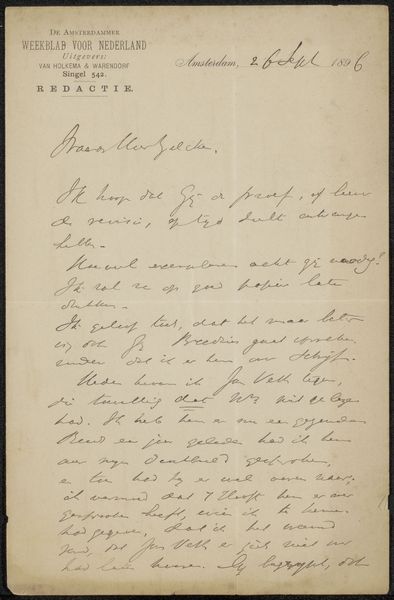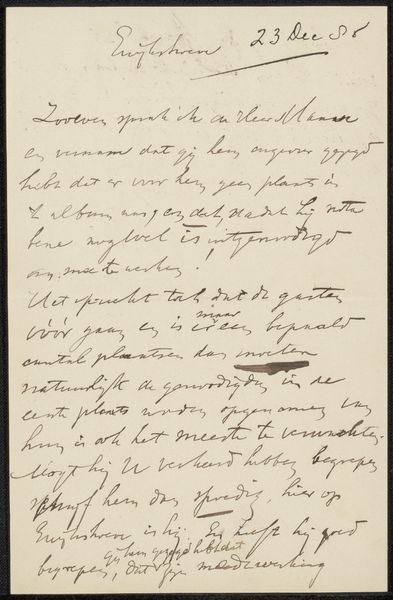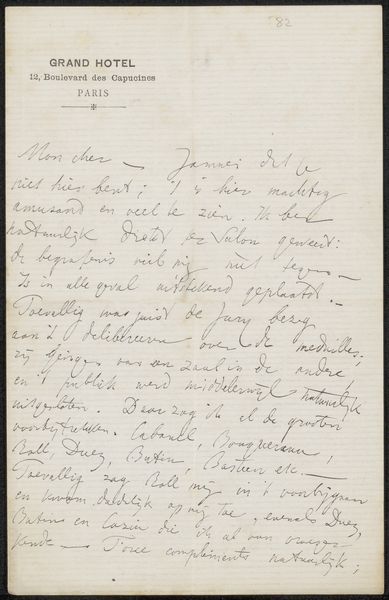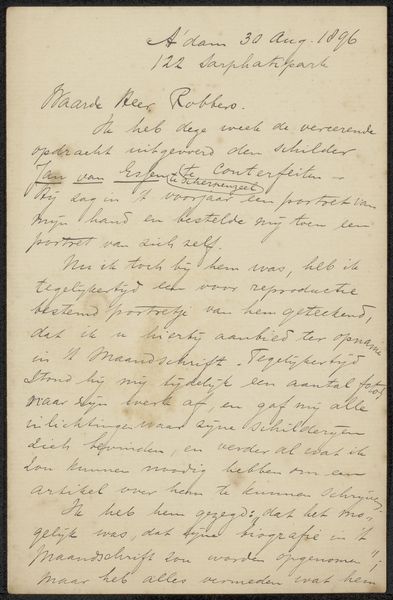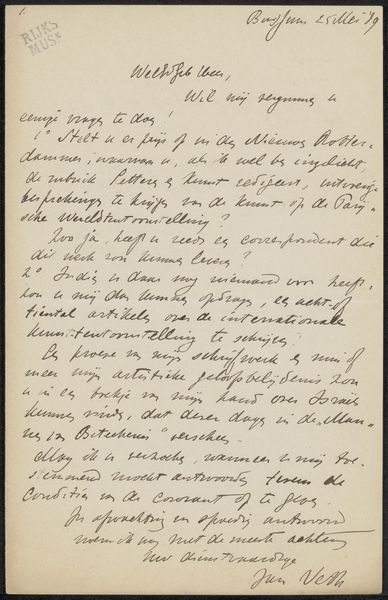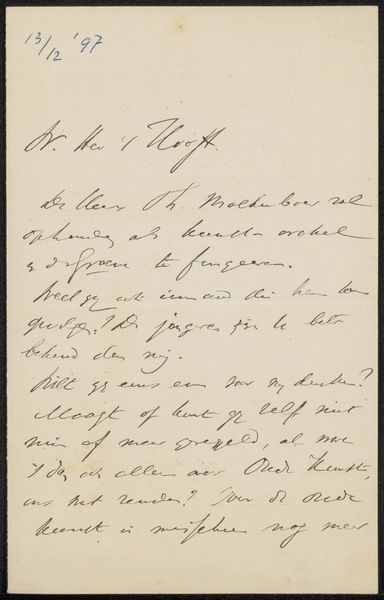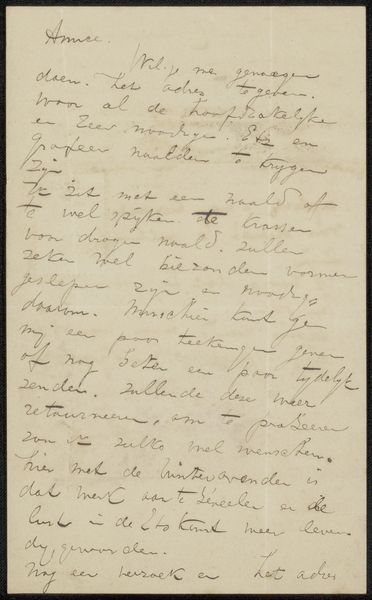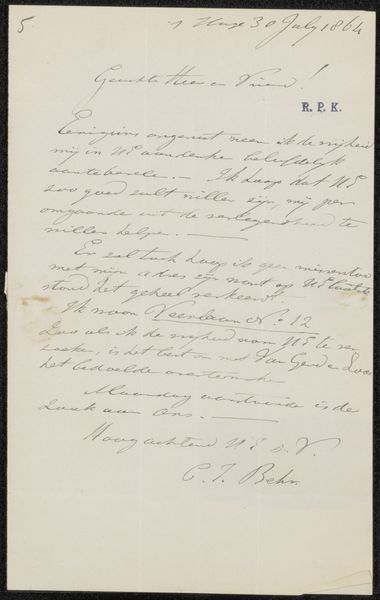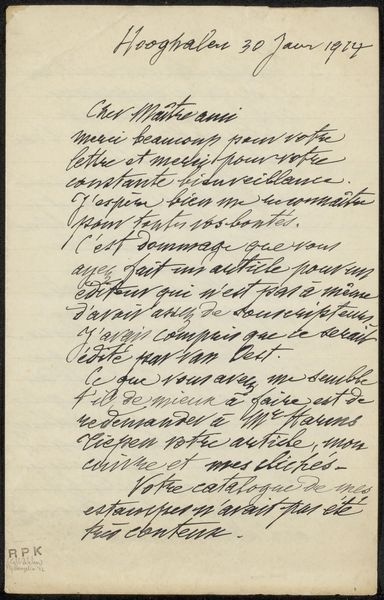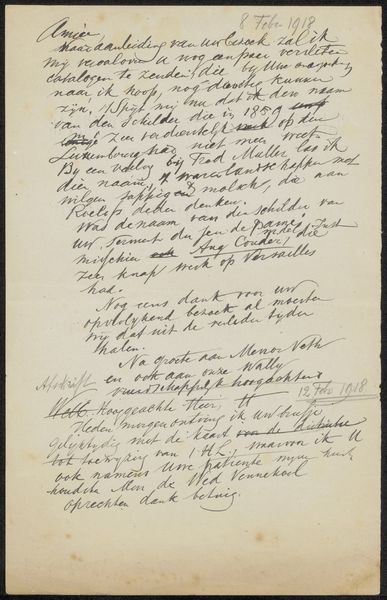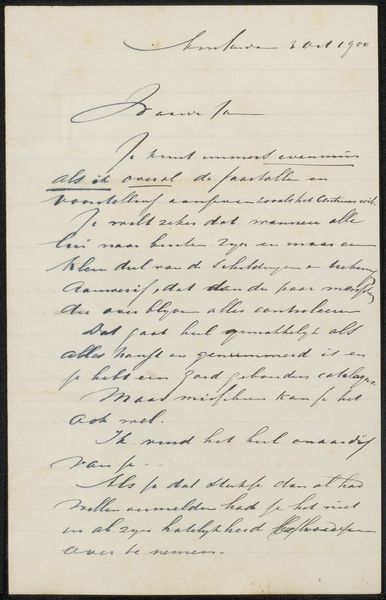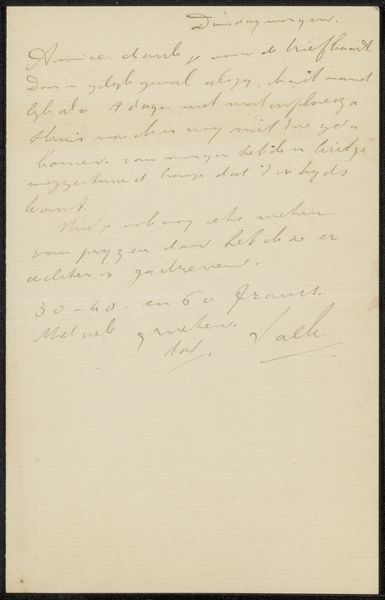
drawing, paper, ink, pen
#
portrait
#
drawing
#
paper
#
ink
#
pen
#
calligraphy
Copyright: Rijks Museum: Open Domain
Editor: This is "Brief aan Philip Zilcken" by Barbara Elisabeth van Houten, made sometime between 1872 and 1930, using pen and ink on paper. I'm struck by how intimate it feels, like a whispered conversation across time. What significance do you see in a handwritten letter displayed as art? Curator: A letter, especially one like this, becomes a potent artifact of personal connection. Notice the flourishes in the handwriting, the slight variations in pressure that betray the writer's mood. This isn't just about the words themselves, but the very act of communication, made physical and lasting. How might this act of writing tie to selfhood? Editor: So, it's the performance of writing that holds significance, and you mean as an imprint of self? Curator: Precisely! Handwriting carries unique symbolic weight. Think of calligraphy in different cultures – how each stroke represents tradition, skill, and individual expression. Consider, too, the vulnerability inherent in handwriting. Editor: Vulnerability? Because it's so personal and revealing? Curator: Exactly. Unlike a printed document, this shows the unedited self. Each letter a direct trace of Van Houten's hand, thoughts flowing directly onto the page. What aspects suggest the relation between writer and receiver? Editor: Perhaps, that she assumes a shared cultural language of decorum, suggesting an audience for more than one. Curator: You've touched on something crucial. The physical letter invites us, strangers separated by time, into the space between writer and recipient. We are bearing witness to this silent discourse, a conversation frozen in ink. A shared dialogue over time.
Comments
No comments
Be the first to comment and join the conversation on the ultimate creative platform.
